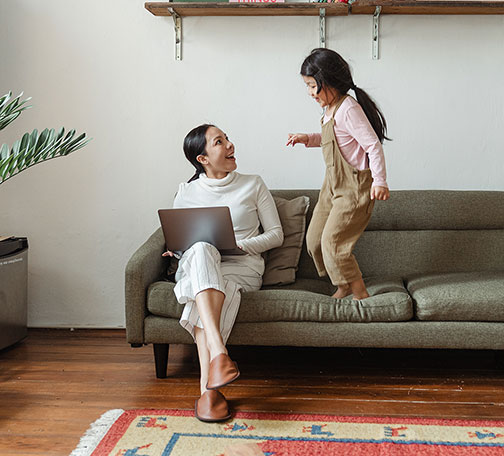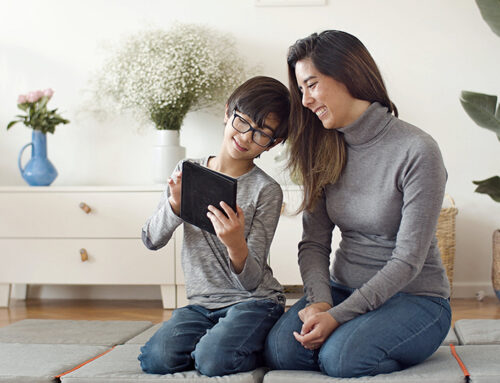This blog will help parents get a better understanding of some of the terminology they may hear used by their child’s speech therapist. Speech, language, communication, articulation, receptive, expressive, pragmatic… What do all of these words mean? It’s easy to get lost within the terminology of any field. Have no fear! We have created this cheat sheet to understand what your child’s speech-language pathologist is talking about and what exactly your child is working on during their speech therapy sessions. First, we will define these terms with a little more detail, and then proceed to provide the quickest definitions possible for easy reference.
Speech vs. Language vs. Communication: What is the Difference?
Speech: Refers to the sounds that come out of your mouth that are combined to form words. Speech includes:
- Articulation: The physical act of producing speech sounds using the mouth, lips, and tongue. Problems with articulation include difficulty producing certain sounds. For example, a common speech sound difficulty includes pronouncing “s” (commonly known as a lisp). An articulation disorder can result in a child being very difficult to understand.
- Voice: How we use our vocal folds to breathe and make sounds. Voice can vary in quality (e.g., hoarseness), loudness, pitch, etc.
- Fluency: Fluency is the rhythm of our speech. Fluency can be affected by many things, including word-finding, sentence formulation, and rate of speech. Typical and atypical dysfluencies (i.e., stuttering) are included in this category.

Language: Language is a rule-based system used to communicate. Language is the process of combining words to formulate a message in a grammatical way and our ability to understand it. Language can be verbal (using words, sentences, etc.) or non-verbal (sign language). There are 3 main categories of language:
- Receptive language: The ability to understand language.
- Expressive language: The ability to produce and use language to communicate with others.
- Pragmatic language: The ability to use language in specific situations and having an understanding of social rules.
This includes using language for different reasons (e.g., greetings vs. requesting vs. informing, etc.), the ability to change language depending on the context (e.g., speaking differently to a peer vs. an adult), and following social rules of communication (e.g., turn-taking, staying on topic, using gestures, facial expressions, eye contact, etc.).
Communication: An umbrella term that includes speech and language. Communication involves any form of expression in order to convey or understand a message.
Basically, any way you can communicate and get your message across.
Modes of communication include words, gestures, objects, sounds, signs, pictures, symbols, printed words, and output from augmentative and alternative (AAC) devices.
Summary!
- Speech: the ability to pronounce words using sounds.
- Language: the rule-governed that allows us to understand what others are saying to us and the ability to use words to produce a message to others.
- Communication: everything combined! Anything you can do to convey and understand a message whether it be through spoken language, gestures, pictures, sounds, etc.

Blue Bird Day fosters socialization, sensory regulation, and pre-academic learning in children ages 2-7 years in therapeutic rotations that simulate preschool and kindergarten settings. Our compassionate therapists practice a relationship-based and family-centered approach, provide parent training, and collaborate on goals and individualized intensive treatment plans for your child.
We believe in a collaborative and multi-disciplinary team approach to therapy. A team of occupational therapists, speech-language pathologists, dietitians, developmental therapists, behavioral therapists, physical therapists, and therapeutic assistants are created for each child to ensure child and family are fully supported and the best possible results are achieved.
Options for individualized, group and virtual therapy sessions are available as well.
Want to learn more or you have a specific question? Feel free to connect with us here!



